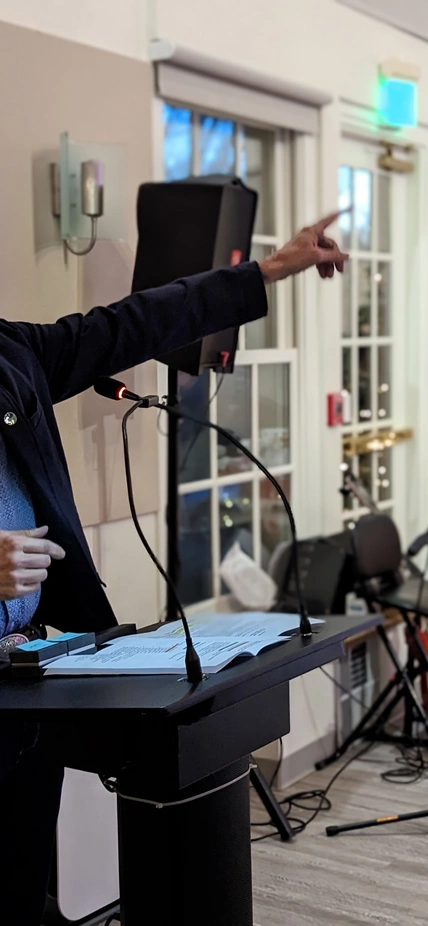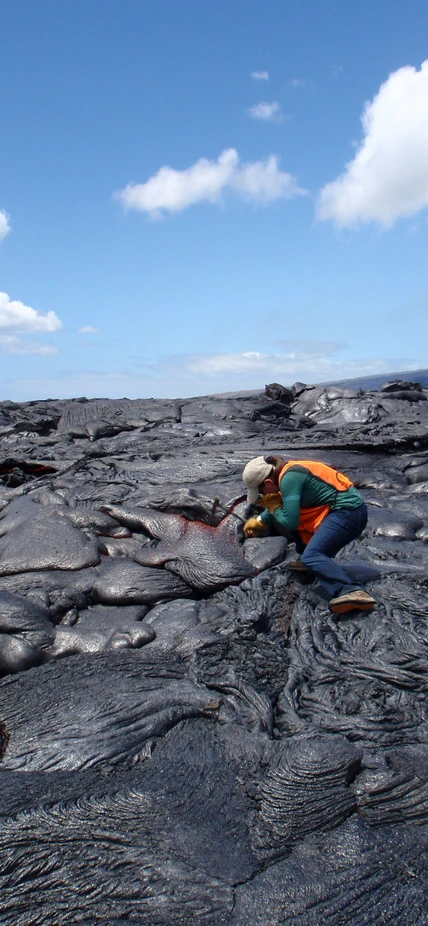Dear Friends,
2022 has been a year of change and discovery at the Earth and Planets Laboratory (EPL). A happy change has been welcoming our scientists and staff fully back to campus. We are once again traveling into the field, convening at scientific meetings, and hosting in-person events on campus. We learned a few things from our sojourn into virtual reality, but nothing can replace the vibrancy of scientific discourse over a shared lunch or a chat over coffee. In short, we’re glad to be back!
Welcoming visitors back to campus
This summer, we revived our Summer Undergraduate Internship Program (SURI) after a few fallow years. We revised the program from the ground up to reach a new, more diverse audience and welcomed seven undergraduates for a fully-paid, 10-week program. Projects ranged from modeling the dust around young stars, to melting core-forming metals, to synthesizing flexible diamonds, and more. These internships provide a rare opportunity for undergraduate students to experience hands-on research working alongside our scientists, and we are now gearing up for year two of our program.

Our Global Visitors Program is also back in full swing! and We are preparing to welcome half a dozen colleagues from all over the world to our campus over the next year. The program brings scientists with a broad range of knowledge and expertise to our campus for periods ranging from weeks to months and is a great way to enhance the open exchange of ideas and sharing of our science.
On a similar note, our Neighborhood Lecture Series continued throughout the pandemic but is now back in action on our BBR campus. These lectures, often from our own scientists, are one of our favorite ways to share our science with the community, so keep an eye out for announcements and attend in-person or virtually this spring!
These programs and programs like it are funded from external sources—especially through gifts to EPL from our alumni. Thank you to everyone who has helped support these programs in the past! We couldn’t do it without you.
Speaking of gifts, in 2022 Carnegie and EPL received an exceptional donation from the estate of Lou and Lore Brown in excess of $4 million. Lou was a former staff scientist with a passion and skill for, among other things, developing and building instruments that allow precise isotopic measurements, and this generous gift is targeted to support our research in geochemistry and cosmochemistry for many years to come.
Discoveries in 2022—from Mars to Magma
In addition to building out our programs, we had an awesome year of discovery at EPL. Below are just a few of the many scientific discoveries made at EPL in 2022, and we anxiously look forward to what is coming next in 2023!

Understanding subduction zone hazards
A new report, co-authored by Carnegie’s Diana Roman, presents a plan for an ambitious interdisciplinary initiative aimed at advancing understanding of the processes that trigger earthquakes, tsunamis, landslides, and volcanic eruptions where tectonic plates converge.
Years in the making, a report from the Subduction Zones in Four Dimensions (SZ4D) Research Coordination Network presents an ambitious plan to make major advances in understanding subduction zone hazards by bringing together a diverse community of scientists in a long-term collaborative effort, deploying new instrumentation in subduction zones, making detailed geologic observations, and developing more sophisticated and accurate models.
Read more
Exploring exoplanets
Recently, the James Webb Space Telescope (JWST) captured the first clear evidence of both atmospheric carbon dioxide and sulfur dioxide detected on a planet outside the Solar System. The discovery was announced by the mission’s Transiting Exoplanet Community Early Release Science Team, which includes four EPL astronomers, Johanna Teske, Peter Gao, Munazza Alam, and Anjali Piette. This is just the very beginning of what portends to be many exciting discoveries from this instrument and the EPL scientists who are deeply involved.
Read more
Studying asteroids
Former EPL cosmochemists Jens Barosch and Larry Nittler were among the first scientists to get their hands on samples from the Ryugu asteroid. Using our specialized ion probe, they discovered grains of material older than our own Solar System. Both Larry and Jens have recently moved on to new positions. Still, investigations of the Ryugu samples, and in the future from the Osiris Rex mission, continue by Conel Alexander, George Cody, and Dionysis Fostoukos.
Read more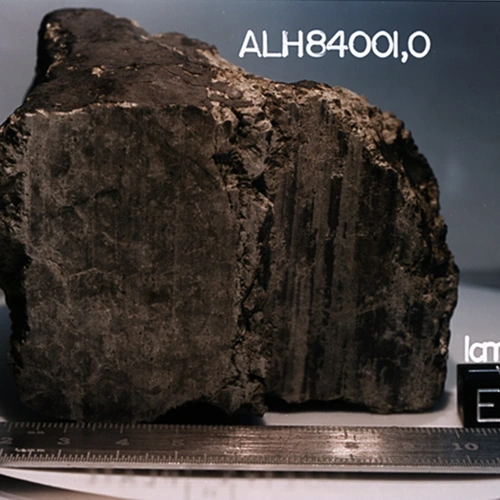
Crossing biology off Martian meteorite
Speaking of the Solar Systems, a team led by Andrew Steele, including several Carnegie colleagues and alumni, determined that organic molecules found in the Alan Hills 84001 Martian meteorite were not biological in origin as previously postulated, but instead were synthesized during interactions between water and rocks on Mars about 4 billion years ago. Steele is also a lead on the Perseverance rover mission, utilizing Raman spectroscopy to identify and search for organic molecules and minerals that have been altered by watery environments and may host signs of past microbial life. We look forward to new results that are coming out early in the new year!
Read more
Mapping mineralogy
A study led by Bob Hazen and Shaunna Morrison, which began more than a decade ago, details the origins and diversity of every known mineral on Earth. This landmark body of work will help reconstruct the history of life on our planet, guide the search for new minerals and ore deposits, predict possible characteristics of future life, and aid the search for habitable exoplanets and extraterrestrial life.
Read more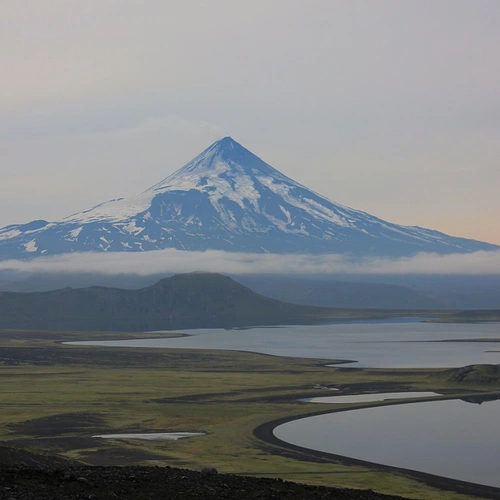
Determining magma depth
Work that included EPL’s Diana Roman demonstrated that the more water a magma contains, the deeper in the Earth’s crust it is stored, challenging the standard view that magma rises through cracks in the Earth’s crust because it is more buoyant than the surrounding material and continues upward until it reaches neutral buoyancy. This finding will inform the creation of detailed models of magma transport beneath volcanos that allow better forecasting of volcanic eruptions.
Read more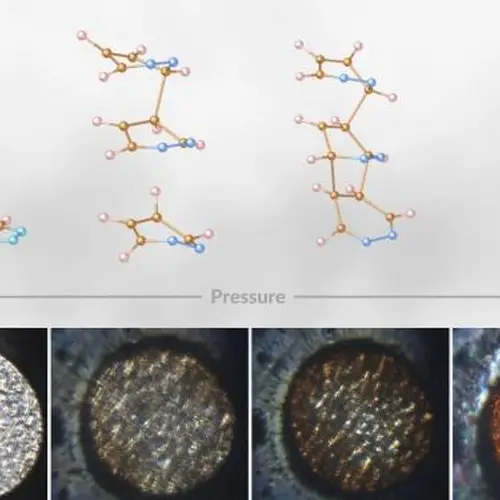
Predicting path to diamond threads
Tim Strobel and his team developed a new technique that predicts and guides the ordered creation of strong, yet flexible, diamond nanothreads. Their work surmounted several existing challenges to the notoriously hard-to-synthesize yet potentially revolutionary material. Synthesizing these amazing and long-sought-after materials at high pressures represents an important step toward an application to practical materials for the future.
Read more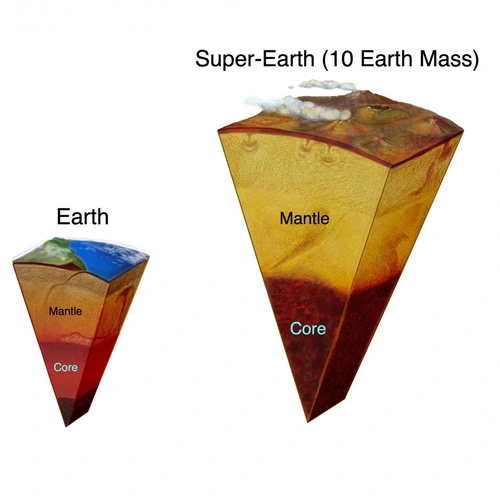
Probing depths of distant worlds
Earlier this year former Carnegie Fellow Raj Dutta and a team that included Sally Tracy, Ron Cohen, Francesca Miozzi, Kai Luo, and Jill Yang, used super high-pressure-temperature experiments to reveal a new post-post-perovskite crystal structure. They predict that as pressure increases the silicate phases that make up deep planetary interiors will change to eight-coordinated oxygen, with important implications for our understanding the physical properties of the interiors of large, rocky exoplanets.
Read more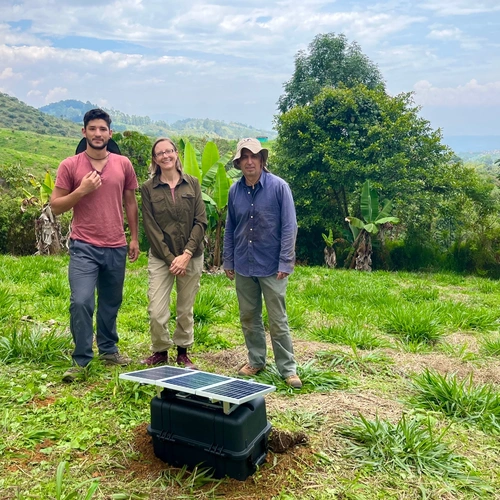
Heading into the field
It is so great to see our scientists back in the field! After long pandemic delays, Lara Wagner began deployment of a large seismic array in the Colombian Andes as a part of her multidisciplinary MUSICA project, which will shed light on the complicated geological setting beneath the Colombian Andes.
Diana Roman was able to spend weeks on a boat in the Aleutians, making key geophysical measurements and collecting samples in her team's search for a new volcanic caldera system.
Read more
In memoriam
Unfortunately, we’ve also lost several colleagues and friends this year.
Mineralogist, crystallographer, and crystal chemist Charlie Prewitt, the fifth Director of the Geophysical Laboratory, passed away peacefully at his home in Arizona in April at age 89. Charlie’s distinguished career spanned more than half a century and was notable for his wide-ranging interests in fundamental crystallography, mineral sciences, and mineral physics. We will not forget Charlie’s gentle spirit and tremendous support for Carnegie science.
Beloved colleague, mentor, and “Isotope Queen” Marylin Fogel, an isotope geochemist whose work touched on a broad scope of subjects ranging from astrobiology to paleoecology and climate change, passed away in May at age 69 after a prolonged battle with ALS. Fogel spent 33 years as a Staff Scientist at Carnegie’s Geophysical Laboratory. Fogel was posthumously honored with AGU's inaugural Eunice Newton Foote Medal at this year’s annual meeting in Chicago.
Nathalie Valette-Silver, wife of former Carnegie geophysicist Paul Silver passed away this past June. Nathalie has been a longtime friend and supporter of Carnegie Science, and her generous gifts will support our geophysicists at EPL for years to come.
Looking forward
I would like to thank everyone for their continued support of our work at the Earth and Planets Laboratory. We look forward to bringing you another year full of exciting discoveries in 2023!
Sincerely,
Michael Walter
Director, Earth and Planets Laboratory
Carnegie Institution for Science
